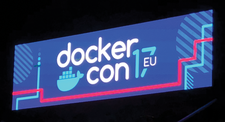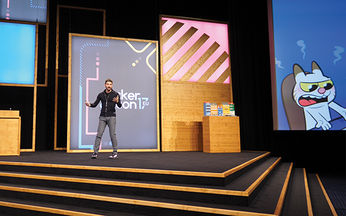Docker Talk – Docker swarms the Kubernetes community
Docker Talk – Docker swarms the Kubernetes community

© Images courtesy of Swapnil Bhartiya
At this year's DockerCon Europe, Docker announced that it is officially supporting the Google-sponsored Kubernetes ochestration engine – an unexpected development that surprised many observers.
At DockerCon EU in Copenhagen (Figure 1), Solomon Hykes, the founder of Docker, announced the availability of Kubernetes as an additional orchestrator along with Swarm, the company's own orchestrator.
The news took many by surprise. Why would Docker support an orchestration platform that competes with its own in-house tool? A closer look at this question reveals some insights into the direction of Docker as a company – and it also offers a fascinating window into the inner-workings of open source communities.
[...]
Buy this article as PDF
(incl. VAT)
Buy Linux Magazine
Subscribe to our Linux Newsletters
Find Linux and Open Source Jobs
Subscribe to our ADMIN Newsletters
Support Our Work
Linux Magazine content is made possible with support from readers like you. Please consider contributing when you’ve found an article to be beneficial.

News
-
Debian Unleashes Debian Libre Live
Debian Libre Live keeps your machine free of proprietary software.
-
Valve Announces Pending Release of Steam Machine
Shout it to the heavens: Steam Machine, powered by Linux, is set to arrive in 2026.
-
Happy Birthday, ADMIN Magazine!
ADMIN is celebrating its 15th anniversary with issue #90.
-
Another Linux Malware Discovered
Russian hackers use Hyper-V to hide malware within Linux virtual machines.
-
TUXEDO Computers Announces a New InfinityBook
TUXEDO Computers is at it again with a new InfinityBook that will meet your professional and gaming needs.
-
SUSE Dives into the Agentic AI Pool
SUSE becomes the first open source company to adopt agentic AI with SUSE Enterprise Linux 16.
-
Linux Now Runs Most Windows Games
The latest data shows that nearly 90 percent of Windows games can be played on Linux.
-
Fedora 43 Has Finally Landed
The Fedora Linux developers have announced their latest release, Fedora 43.
-
KDE Unleashes Plasma 6.5
The Plasma 6.5 desktop environment is now available with new features, improvements, and the usual bug fixes.
-
Xubuntu Site Possibly Hacked
It appears that the Xubuntu site was hacked and briefly served up a malicious ZIP file from its download page.


